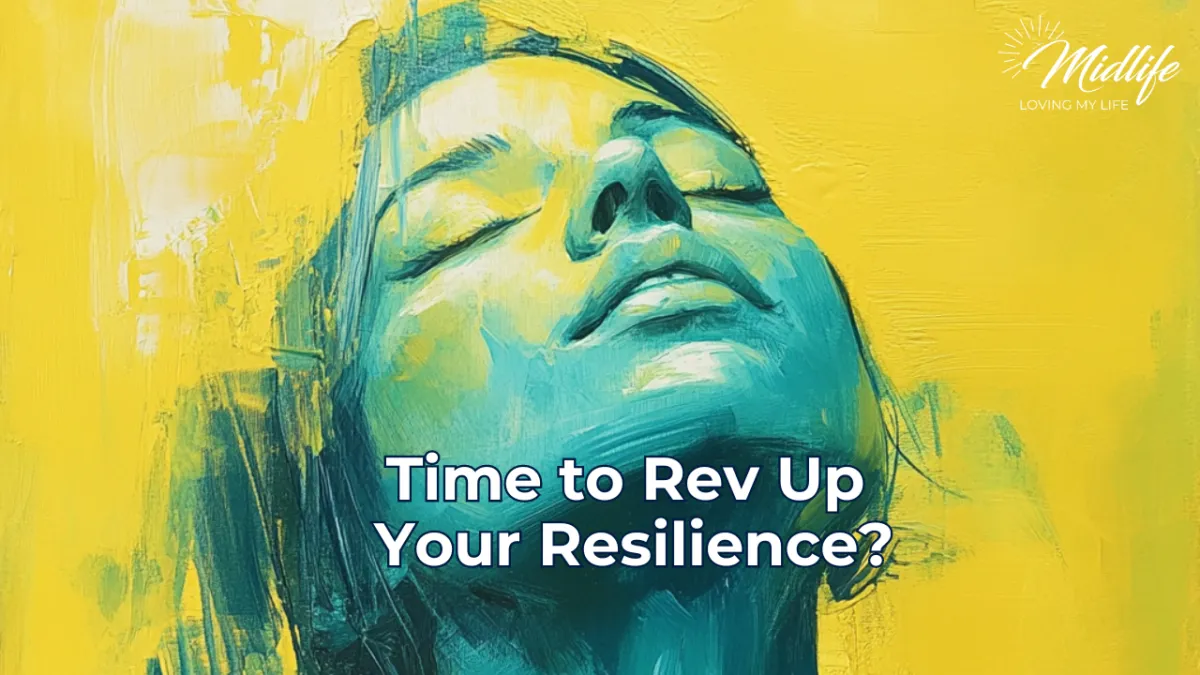
Midlife Manoeuvres: How to Build Resilience in Midlife
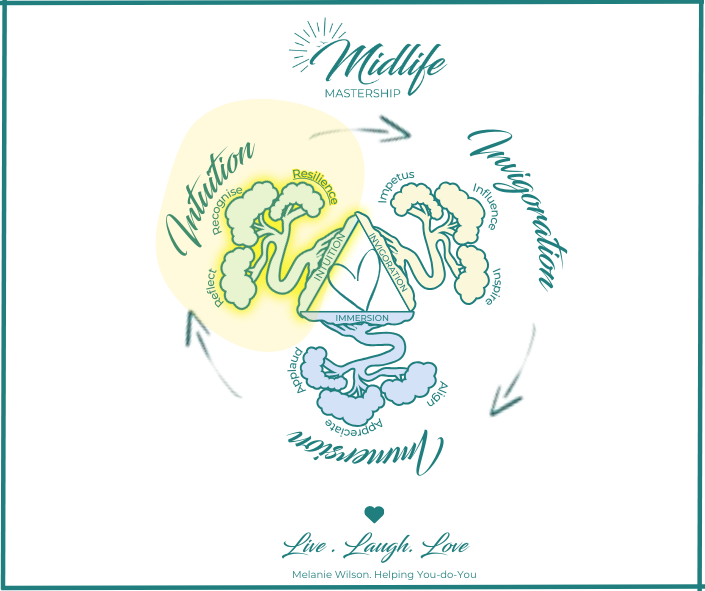
Introduction:
Hello Beautiful People, and welcome back to Midlife Manoeuvres! Today, we're diving into a crucial topic: building resilience, especially for us in midlife. Changes can often feel like challenges, but resilience helps us cope, adapt, and recover.
When I've faced moving to different cities solo, I've initially felt overwhelmed. But by breaking the 'elephant' of a move into bite-size tasks, I’ve been able to transition more readily with each subsequent move. Experience builds resilience. Each time we try a new strategy, seek out alternative perspectives, and persist past an obstacle, our resilience muscle strengthens.
But it's not all about 'pushing our way through' situations. Building resilience means being kind to ourselves. It's completely normal to feel stressed and overwhelmed when faced with trying situations like starting over, but each time we move through it, we build ourselves up too. We've got this!
Let's explore how to build resilience and bounce back from setbacks, transforming obstacles into stepping stones.
What is Bounce Back and Resilience?
Bounce back is our ability to recover and adapt after experiencing adversity, difficulty, or trauma. It’s like a resilient ball that returns to its original form despite being impacted. In behaviour, bounce back means responding constructively to challenging situations, rather than becoming permanently defeated.
When I've encountered poor evaluations at work, it initially made me feel exhausted. Over time, I came to recognise many of these as invitations to improve, and I've been able to up my game as a result.
So, what elements contribute to revving up our resilience?
Key Characteristics of Resilience:
1. Absorbing and Adapting to Shocks:
Reflecting on experiences and building on them.
2. Reframing and Reorienting After Difficulties:
Envisioning a new path that moves us onward.
3. Focusing on Solutions:
Opening ourselves to possibilities that can alter our circumstances.
4. Embracing Change and Uncertainty:
Seeing challenges as opportunities for growth.
5. Developing Coping Strategies:
Imagining different options to try out.
6. Maintaining Purpose and Optimism:
Using what we've learned to move forward.
Infographic: Understanding Bounce Back and Resilience - CLICK HERE to download.
Pause for thought: Can you remember a time when you bounced back from a setback? How did it change your perspective?
Bounce back and resilience are intertwined concepts that describe our capacity to recover, adapt, and thrive in adversity. In midlife, we recognise that tough times are part of life's cycles. We’ve negotiated challenges before, and we’ll do it again, building resilience as we go.
Generally, it's no easy ask, and in most cases, we'll need to dig deep to discover the resilience 'gold' that is available. Let's take a look at some tips geared towards fostering resilience in adversity.
Having scoped out the key characteristics of resilience, let’s consider now how we can develop resilience in adversity.
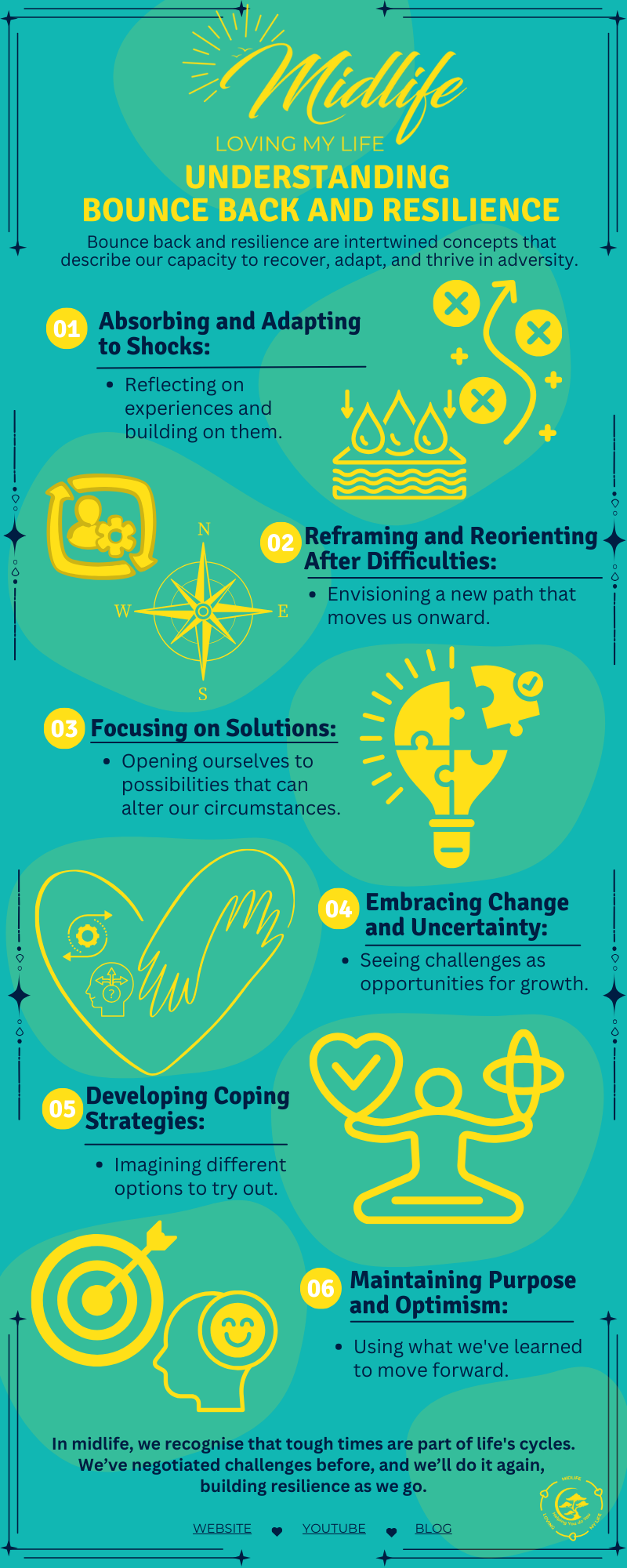
How to Develop Resilience in Adversity?
Coping strategies have played a large part in my transitions between roles. When I transitioned to a new role after being made redundant, I relied on coping strategies like studying my skillset and my strengths. I reflected on what I enjoyed, and what I was interested in learning. I created a schedule which centred around creating tailored CVs for out of the box roles which would further my development. This kept me focused and moved me forwards.
Here are the key factors and strategies to cultivate resilience:
1. Coping Strategies:
Learn effective stress management techniques like problem-solving by breaking down overwhelming tasks into manageable steps, relaxation through detaching from the issue for regular intervals, and emotional regulation by journaling: successes, feelings, and patterns.
Example: When faced with a complex project, I break it into smaller tasks, aim to complete items in line with my levels of concentration and energy, which sooths away stress and increases my sense of accomplishment. Gratitude journaling helps me to process my feelings by encouraging me to seek out the good, the lessons, the bigger picture.
2. Growth Mindset:
Believe that our abilities and attributes can be developed and improved. Like exploring where our boundaries lie, and gently nudging past them in gentle ways. Even micro-steps can feel freeing and fuel our curiosity.
Example: For instance, I enrolled in an online course to learn digital marketing, which not only enhanced my understanding of how things work, and the tools available to me, but also increased my curiosity about how I can build on my achievements so far. Learning brings with it a sense of improvement and growing momentum.
3. Inner Strengths:
Develop a sense of control and confidence by recognising our influence on outcomes through decisions and actions. We may need to negotiate our way past the idea that decisions are ‘fatal and final’. Every decision we make brings forth a new set of options.
Example: I’ve needed to learn to trust that no single decision that I make is ‘life and death’. Lately when I’ve been deciding which countries to visit next, I do some research, decide, sleep on it, and then move. There are always other countries if this one doesn’t suit me. Our minds seek security like a bird it's nest. I know I can find security in more places through thoughtfully experimenting with my destinations.
4. Outer Resources:
Leverage supportive relationships to provide personalised responsiveness, scaffolding, and protection. Sharing with ‘our tribe’ is a great means of exploring in a safe environment, and can offer support, ideas, and feedback.
Example: Sometimes when I’ve felt out on a limb amongst my existing peers, I’ve joined external groups of like-minded others with a view to listening to their goals and challenges as they so often feed into my own. The addition of 'outside' perspectives into the melting pot puts a lot more options on the table, and introduces a sense of camaraderie.
5. Balance and Adaptation:
Visualise a balance in which protective experiences and coping skills counterbalance adversity. Be aware of potential challenges, but home in what success will look like, and implement ideas which will further our cause.
Example: When I’m taking on a new subject, I like to research different options available to me, including time, expense, and learning mediums but over time I have learned that to pick one and run with it, is far better than stalling on a choice. Making no choice, is the most stultifying option there is. Our minds would rather keep us 'safe' but taking action 'calls us out' in the best possible way.
6. Personalised Approach:
Recognise that resilience is a complex and personal process, requiring a unique combination of inner strengths and outer resources. We can take inspiration from others, but ultimately our own way will be unique to us.
Example: When I’m seeking to up my game I investigate my topic from numerous angles. I like to distil my own views by discerning what is resonating with me, and then bringing together diverse ideas and moulding them into my own personalised take. This helps me to keep evolving my understanding and challenge any precepts. The end result is my comfort zone expands and my curiosity is satisfied.
7. Types of Resilience:
We benefit from understanding there are four types of resilience. Physical resilience, how the body deals with change and recovers; mental resilience, a person's ability to adapt to change and uncertainty; emotional Resilience, being able to regulate emotions during times of stress; Social Resilience, involves the ability of groups to recover from difficult situations.
Example: I’ve noticed that building my physical resilience through healthier eating, regular exercise and sound sleep lends itself to boosting my mental resilience and emotional resilience as a biproduct. My mind and emotions are both nourished by physical wellbeing. I have learned the hard way that the opposite is also true, so I strive for balance, especially when I'm feeling the pressure. It helps to keep me grounded.
Infographic: Developing Resilience in Adversity - CLICK HERE to download
Pause for thought: Which of these approaches lend themselves to how you usually deal with challenges, and how can you best utilise them?
These approaches remind us that resilience is not a fixed trait but a dynamic process cultivated and practiced over time. Each move improves our process by building on what we’ve learned. In midlife, experience is one of our best assets.
Now we've explored methods which can develop our resilience, let's home in on the mindset aspect. 'Resilience Mindset' can definitely assist us on our resilience-building mission.
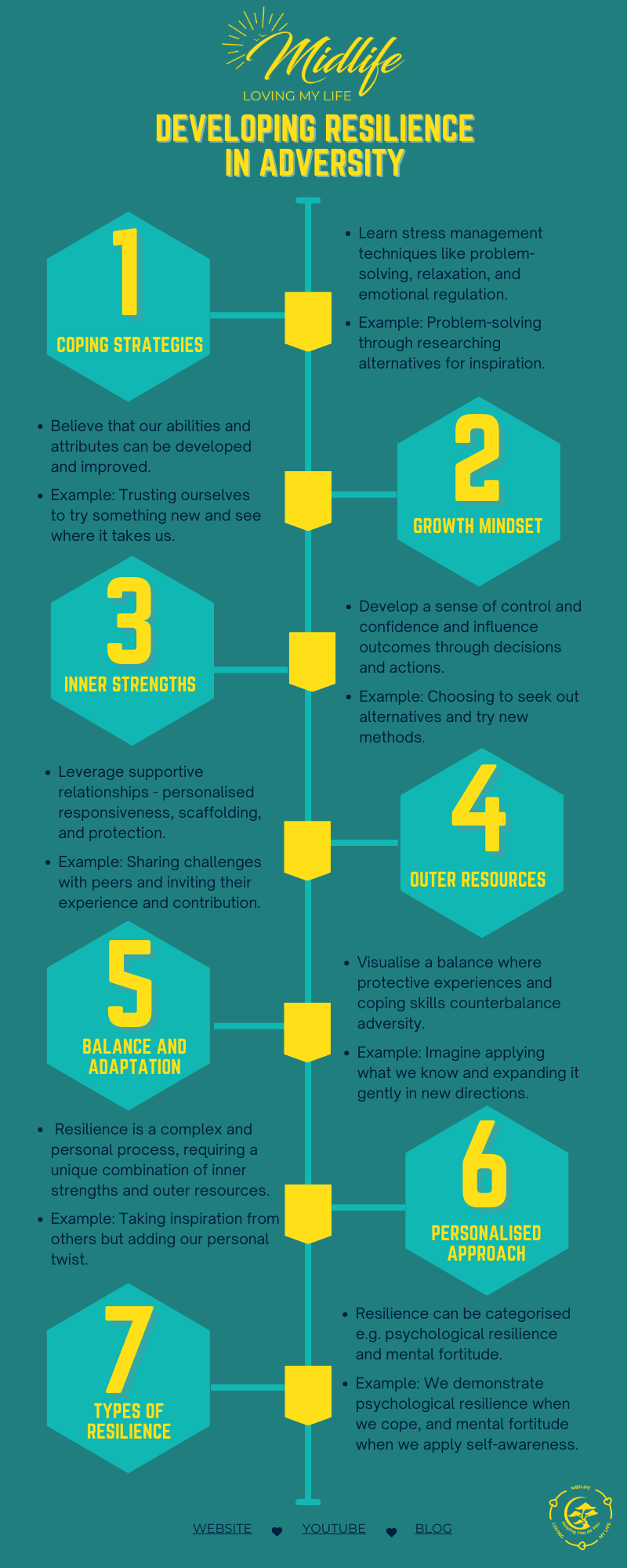
What is Resilience Mindset?
Developing a resilience mindset means embracing growth and learning through challenges. My first fully solo move was stressful. I had to pack up my life, find a new place, and start again. All while learning doing my new day job too. But this move, and each subsequent one has taught me something new – like scouting a temporary home base which would allow me to get to know the area before renting or buying. Getting in touch with local estate agents, and tapping into the insider knowledge of my colleagues. Focusing myself on the excitement of a fresh start rather than the stress of it kept me buoyant. Now, moving isn’t as daunting because I’ve learned what works for me.
Here are some resilience mindset characteristics:
1. Ability to Navigate Life’s Challenges:
Adapting to change and understanding our emotional responses.
2. Positive Response to Failure or Adversity:
Persistence in the face of obstacles.
3. Maintaining Focus:
On wellness, self-awareness, vision, and motivation.
4. Capacity to Evolve:
Responsivity to change and engaging with the temporary discomfort of the unfamiliar.
5. Mindfulness and Self-Care:
Daily mindfulness practices and prioritising well-being.
As midlifers, we recognise resilience isn’t easy to build but we have the advantage of what we have already learned. We can do this!
Pause for thought: Can you recall a time when you had to figure things out on your own? What strategies did you use, and what did you learn from the experience?
As we can see, growing a resilience mindset can supplement our cause, but what might deplete it? Let's take a look at the 'resilience myth'.
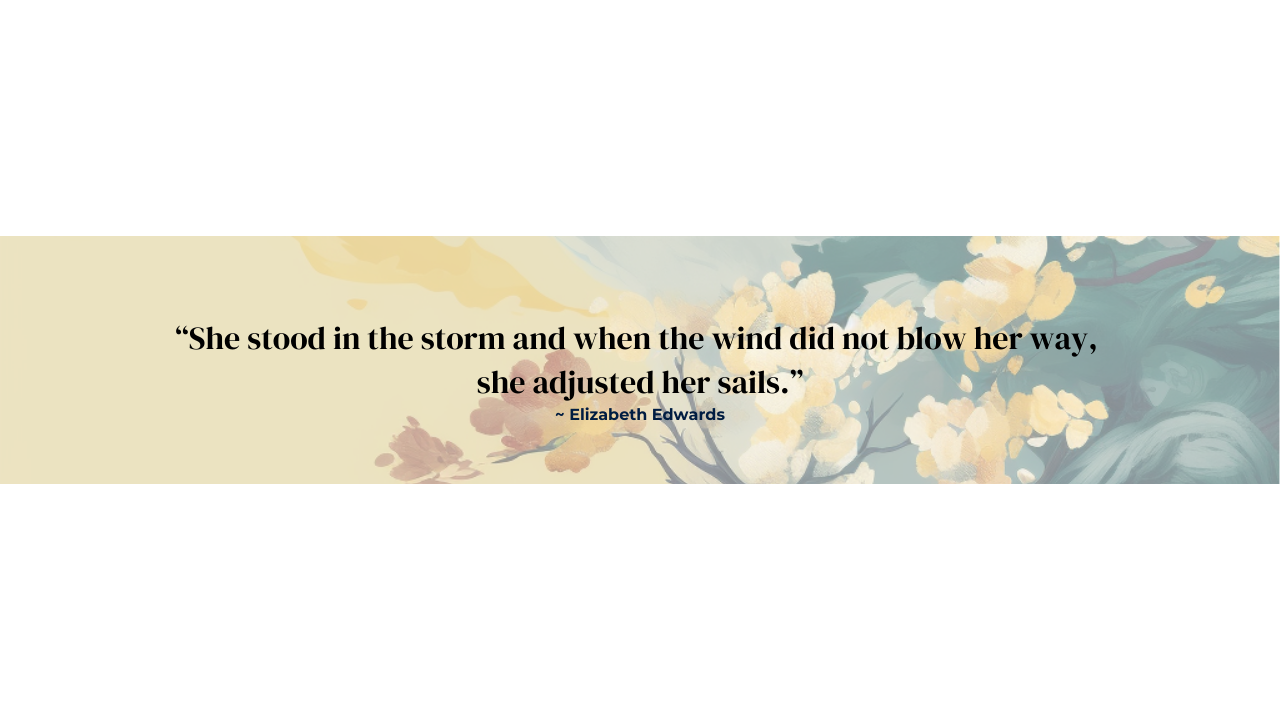
What is the Myth of Resilience?
There is a widespread notion that resilience is an inherent trait allowing us to “bounce back” without external support. Soraya Chemaly, author of “The Resilience Myth,” outlines the drawbacks of this belief:
1. Erases Social and Environmental Factors:
Ignores the role of social support networks in coping with adversity.
2. Blames Individuals for Their Experiences:
Shifts focus from systemic issues to personal shortcomings.
3. Promotes Unrealistic Expectations:
Sets unattainable standards for self-reliance.
4. Fosters Stigma and Shame:
Leads to guilt or inadequacy when we do not “bounce back” as expected.
Chemaly argues that true resilience is built on interdependence, nurturing relationships, and care for others and the environment.
Pause for thought: Think about a recent challenge you faced. How did you approach it, and what did you discover about your own resilience?
As midlifers, we build resilience with respect for ourselves, our individual circumstances, and self-care. Our kindness and compassion to ourselves are the cornerstone of our success.
Now we've understood the ways in which we might sabotage ourselves on our resilience quest, let's explore another school of thought which calls upon Stoic principles.
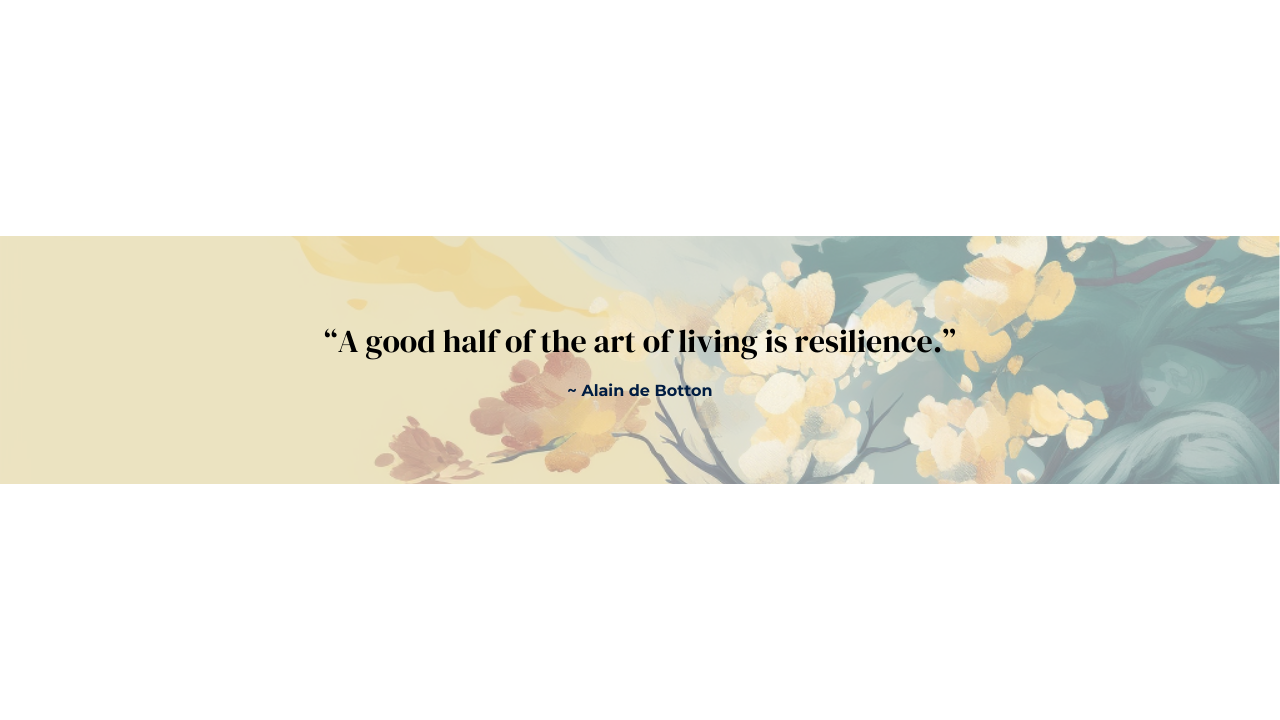
How Stoic Indifference Unlocks Resilience
In Stoic philosophy, indifference is about recognising what is within our control and what is not. Focusing on what I can control has been a core ingredient in keeping grounded when I feel stressed, like attending to the practical aspects of a move.
These are the key aspects of Stoic indifference:
1. Detachment From External Events:
Recognising fate, fortune, or others' actions are outside our control.
2. Focus on What Can be Controlled:
Controlling our thoughts, emotions, and actions.
3. Emotional Regulation:
Remaining calm amidst turmoil.
4. Acceptance of Impermanence:
Developing detachment from fleeting events.
5. Inner Strength and Character:
Navigating life’s challenges with greater ease.
As Epictetus noted, “It’s not what happens to you, but how you react to it that matters.” By embracing Stoic indifference, we can transform our reactions to adversity, unlocking resilience.
Developing this kind of 'indifference' can feel especially hard when we're faced with the stress of our challenges, so remember we all experience setbacks, and it’s okay to feel disheartened. We'll feel relief too, when we get to the other side. And we know we will!
Pause for thought: Do you find yourself naturally embodying any of these aspects? How is it helping you?
If Stoic wisdom appeals to your way of being, please pay particular attention to our next segment on the way Stoic lessons can help us.
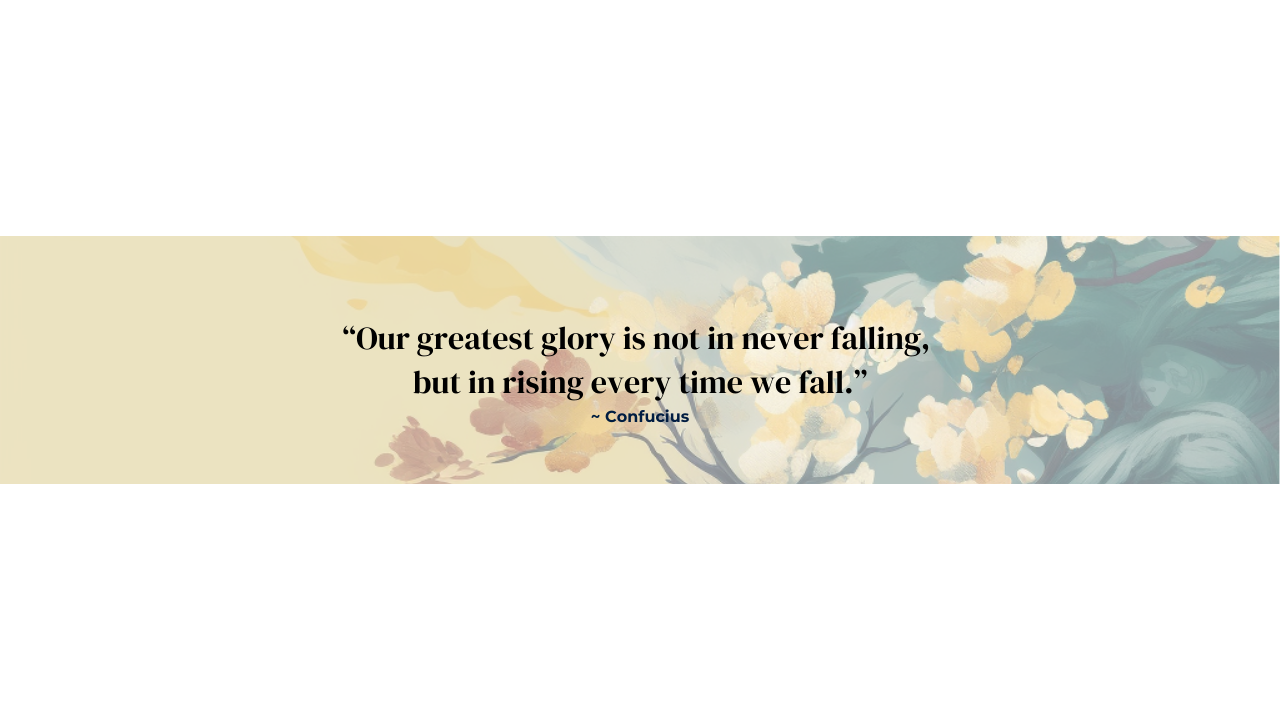
11 Stoic Led Transformative Lessons for Resilience
Here are 11 transformative lessons for resilience and inner peace, distilled from Stoic philosophy:
1. Embrace Inner Strength:
Recognise that true resilience comes from within and is rooted in reason and goodness.
For instance, instead of berating ourselves for a mistake, remembering that mistakes are part of the learning process and an opportunity for growth.
2. Control Your Perceptions:
Understand that emotions and reactions are shaped by your perceptions, not external events.
Like when we notice we're having a strong reaction to something, and question why this is.
3. View Challenges as Opportunities:
Embrace discomfort and adversity as chances for personal growth.
Gratitude can be a great way to reframe a challenge endured into something we have learned.
4. Cultivate Virtue:
Strive to behave well, regardless of external circumstances, as this fosters a grounded character.
Like when we're able to keep the higher ground in spite of provocation.
5. Practice Self-Discipline:
Develop the ability to regulate your emotions and focus on what’s within your control.
For instance when we take a step back when faced with an emotionally challenging situation and give ourselves time to respond thoughtfully and constructively.
6. Seek Social Connection:
Recognise the importance of social supports. Being “at home” in the world, connected to others, is key to inner peace.
Enjoying our families, friendships and peer groups builds our sense of belonging.
7. Focus on What You Can Control:
Concentrate on what’s within your sphere of influence, rather than worrying about external events.
Like when distance ourselves from newspaper headlines, and focus on our day to day living.
8. Endure Hardship:
Willingly allow discomfort to strengthen your resolve and develop resilience.
We accept that we need to extend ourselves to build body muscle, and we can strengthen ourselves in the same way as we overcome life challenges.
9. Reflect and Practice Mindfulness:
Regularly examine your thoughts and actions to gain a deeper understanding of yourself.
Reflecting on how we respond to challenges allows us to notice our biases, and consider different ways to handle things.
10. Avoid Extremes:
Recognise that an extremely impassive approach can be harmful. Strive for balance and compassion.
Trying situations often demonstrate that adopting black and white thinking is destructive and that shades of grey, doing the best we can, with what we have, is a better approach.
11. Prioritise Inner Peace:
Understand that true resilience is rooted in inner peace and living in accordance with reason, good, and social connection.
We make better decisions, and take better actions, when we are at peace with ourselves, and come from a place of grounded calm.
Infographic: 11 Stoic Led Transformative Lessons for Resilience - CLICK HERE to download
In cultivating this wisdom, you can build greater resilience and enjoy a more peaceful life. In midlife, we have the benefit of rich life experiences to glean understanding from. They are our vein of gold.
Pause for thought: Can you identify the lessons that could most readily boost your reserves of resilience?
Let's close with a summation of how you can prepare yourself and build a bigger stockpile of resilience!
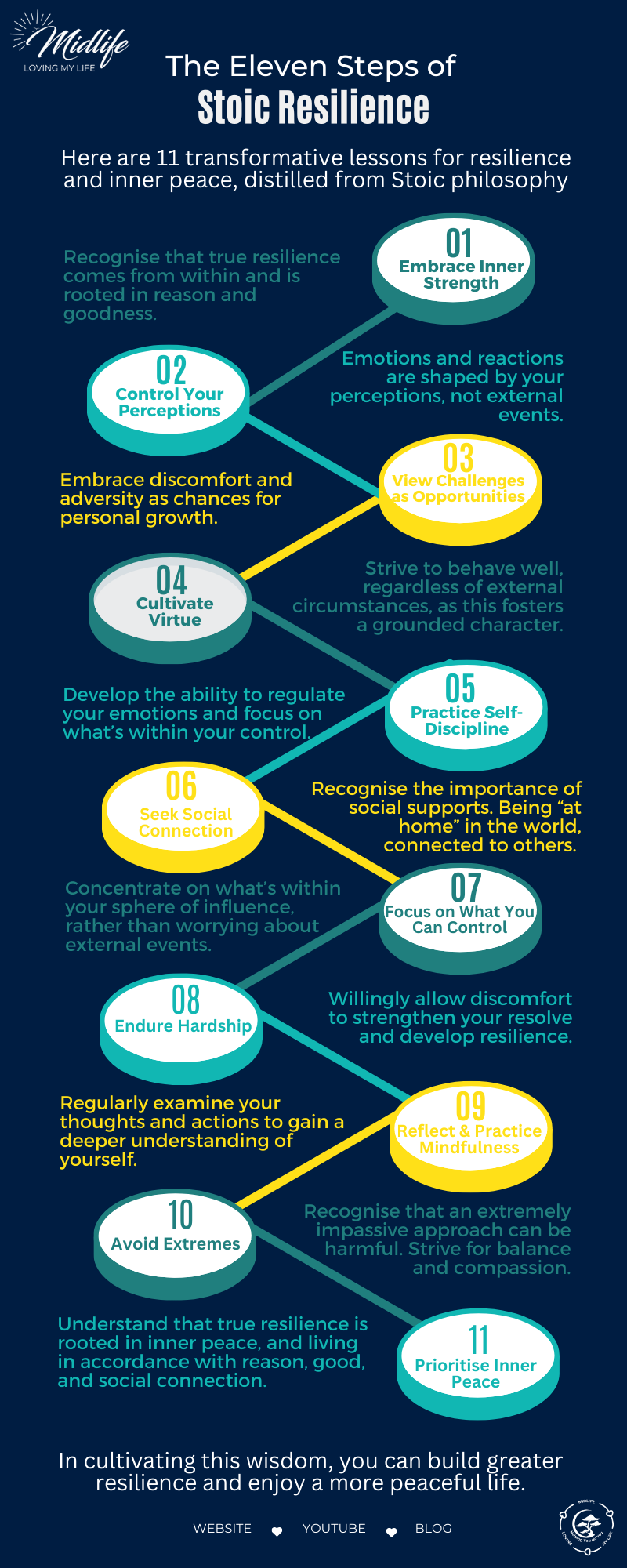
Parting Thoughts
Resilience is the oil that allows us to glide more readily between the rough and the smooth. In midlife, we know that life is a roller-coaster, and resilience helps us surf between the highs and lows with grace and ease.
In my life, building on feedback has helped me to strengthen my skill set many times over. Taking a constructive stance on feedback is the gift that keeps giving!
The gains make lighter work of the effort. Challenges that would have stalled me earlier in life are now par for the course.
Let’s start converting our life lessons and experience into buoyant resilience today!
FREE Downloads
Practical Exercise PDF to Get You Started: CLICK HERE
Infographic: Understanding Bounce Back and Resilience - CLICK HERE
Infographic: Developing Resilience in Adversity - CLICK HERE
Infographic:11 Stoic Led Transformative Lessons for Resilience:- CLICK HERE
Your copy of our Midlife Manifesto - CLICK HERE
WEBSITE ♥ YOUTUBE ♥ BLOG
♥ EXPLORATORY CALL ♥
